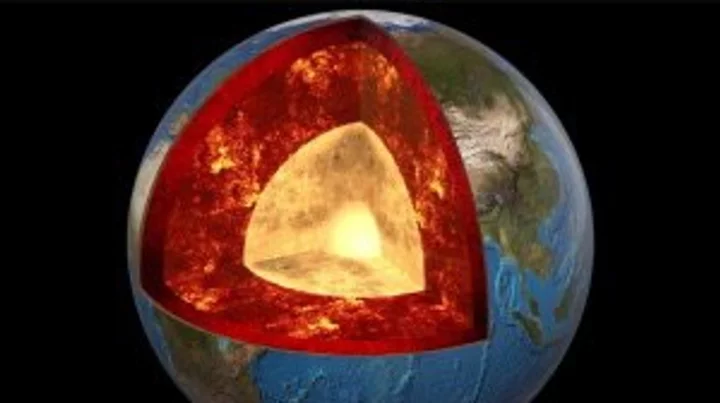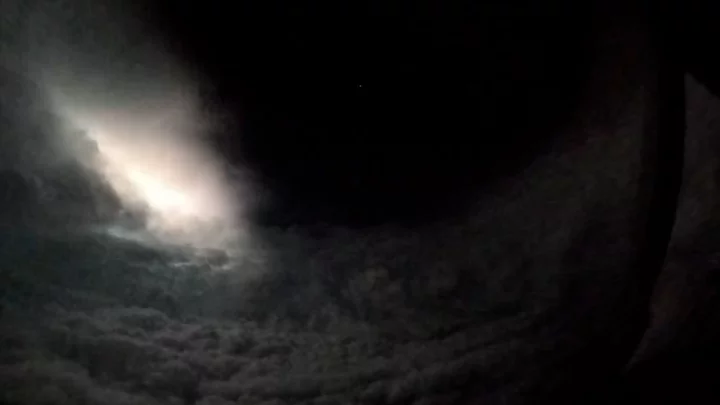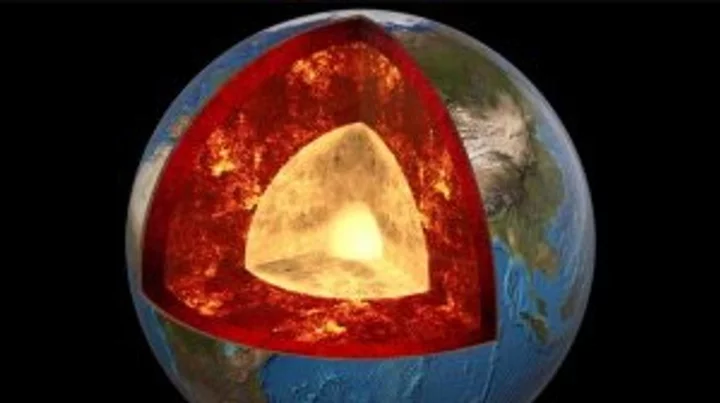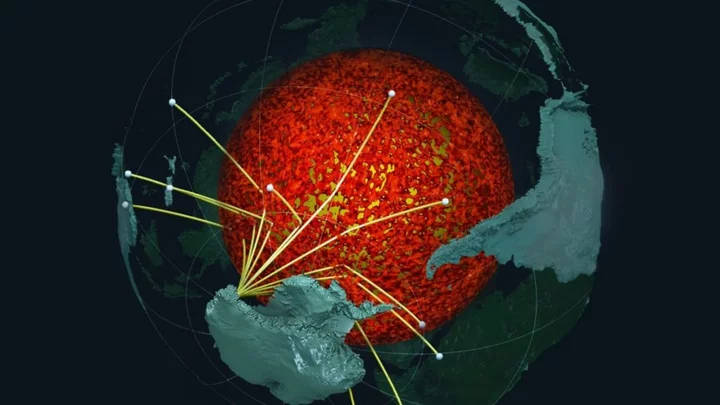
What is Mercury in retrograde and why do so many people believe it impacts their lives?
Having a bad day? Mercury in retrograde. Broken your phone this morning? Mercury in retrograde. Had a sudden and unexpected breakup? Mercury in retrograde. It only takes a quick swipe through social media to see this cosmic event taking the blame for pretty much everything – and according to the age-old astrological theory, we are all influenced by its effects. Astrologers have been examining Mercury retrograde for thousands of years, but it wasn't until 2010 when Google searches started to spike. Now, with the help of Instagram and the drive towards self-care and mindfulness, interest in astrology has heightened to a whole new level. While Mercury retrograde is far too often viewed as a negative thing, it is also said to be the perfect time for self-reflection and growth. Laura Hayes, certified astrologer and founder of the online astrology community, @astrohuns, spoke with Indy100 to break down this astrological phenomenon. Sign up to our free Indy100 weekly newsletter What does Mercury retrograde mean? To put it simply, Mercury retrograde occurs when the planet Mercury – which takes 88 days to orbit the Sun, as opposed to Earth's 365 – appears to go backwards in its orbit. In Astrology, Mercury – named after the Roman deity who served as a messenger to the gods – is the planet of communication and the mind. Hayes explained: "Its placement in your birth chart affects how you think and communicate. Additionally, Mercury's transits at any given time will also have an impact on our thoughts and way of communicating." How long does it last? It tends to last around three to four weeks a time. However, there is also a "shadow period" – or retroshade – before and after Mercury Retrograde. This can apparently make things "a little rocky." "This Retroshade period lasts about 2-3 weeks and is almost like a diluted form of the retrograde itself," Hayes said. "Therefore, you may begin to feel the effects of Mercury retrograde a few weeks before it begins and still feel its lingering effects for a few weeks afterwards." How can it 'impact your life'? Astrologically speaking, when Mercury is in retrograde, the areas of life associated with the planet are said to be affected. "You are said to have verbal communication difficulties at this time, causing you to mishear someone or say the wrong thing, leading to arguments and misunderstandings," Hayes explained. People can find themselves "stumbling over their words, saying the wrong thing, or struggling to think coherently altogether." "Phones can lose signal; steamy texts to bae get sent to your boss instead, or your laptop breaks down when you're in the middle of writing your memoirs," she added. "Travel is another area that gets messed up during Mercury Retrograde, so be careful on the road and make sure to double-check flight details before you book." What can people do to deal with said 'effects'? According to KJ Atlas, consulting astrologer, writer, and artist of the human aura, you shouldn't put your life on hold purely because Mercury is retrograde. Instead, she says it is a time to significantly slow down. "You're more likely to make mistakes during this period, but if you listen to the call to take it easy, spend more time in self-care, go out less, and prioritize your mental and physical health, you'll be just fine," she explained. "If you need to sign contracts, purchase something significant, or have a deep talk, just do so mindfully and do your due diligence." Atlas acknowledged one positive rule of thumb: People are encouraged to do anything with the prefix 're'. "If you’re in a situation that you don’t enjoy, you can use this period for reevaluation or rekindling, but wait to take action until the cycle has ended. This includes the pre and post shadow periods. "People often jump right back into things that might be warnings during Mercury retrograde on the day that it’s technically over, but it’s good practice to wait a few days." When does Mercury retrograde occur? Mercury retrograde occurs three to four times per year. It tends to occur roughly around the same time each year. The dates* for this year are: January 14th - February 4th May 10th - June 3rd September 10th - October 2nd December 29th - January 18th (2023) *dates based on GMT, so they may vary slightly in other time zones. It's worth noting that astrology is not the same thing as astronomy. Astrology is a belief system that the stars and planets allow us to 'read a person', predict the future or have the ability to alter our daily lives, as above. Astrology can be important to some cultures, but it is not based on scientific evidence. Astronomy, however, is backed by data. David J. Helfand, Professor of Astronomy and Columbia University Chair, slammed the astrological theory as "arrant nonsense." Helfand explained that the retrograde motion of Mercury is a "simple consequence of the fact that we observe the sky from a moving platform we call Earth as it orbits the Sun. The other planets also orbit the Sun, all in the same direction." "The apparent motion of any planet as observed from Earth is a combination of the orbit of the planet and the orbit of Earth," he added. "Simple geometry shows that roughly three times a year (for Mercury – less often for other planets on longer orbits), these combined motions give the Earth-bound observer the illusion that the other planet has reversed its direction of motion compared to the background stars." He stated that the orbit of Mercury is governed by laws of gravity and is completely unchanged, which has "been well-understood for over 400 years – it's hardly a new idea." "But apparently, some people prefer 2000-year-old views of the world in which the planets govern their lives – no need to take any personal responsibility then, is there?" "In fact, the gravitational force of Mercury on an Earth-bound you is less than the force of your dog on you when you pat him or her on the head," Helfand explained. "Indeed, patting your dog on its head is likely to have a positive influence on your mood. Maybe people should try that instead of contemplating arrant nonsense about the planets." Have your say in our news democracy. Click the upvote icon at the top of the page to help raise this article through the indy100 rankings.
2023-09-15 19:50

Video of GoFast UFO resurfaces after being mentioned in NASA report
NASA lifted the lid on its unidentified anomalous phenomena study on Thursday (14 September) which aimed to identify "how data gathered by civilian government entities, commercial data, and data from other sources can potentially be analysed to shed light on UAPs." While the report was "not a review or assessment of previous unidentifiable observations," the briefing prompted a video of 'GoFast UFO' to resurface. The clip from 2014 was released by the pilots "to clear up any misconceptions by the public on whether or not the footage that has been circulating was real or whether or not there is more to the videos." The statement on the Department of Defense further went on to say at the time: "After a thorough review, the department has determined that the authorized release of these unclassified videos does not reveal any sensitive capabilities or systems, and does not impinge on any subsequent investigations of military air space incursions by unidentified aerial phenomena." The clip also got a mention in the recent 36-page report, published on the NASA website. "A well-known UAP event is the “GoFast” video, recorded by navy aviators from the USS Theodore Roosevelt," it read. @uapbrand GOFAST UAP - better known as the 'Tic Tac' UFO. ? #UAP #UnidentifiedAerialPhenomena #UAPs #OVNI #OVNIs #UFO #UFOs #UFOvideo #UFOvideos "A still frame from this video is shown in the Figure below, where the infrared camera has locked onto a small object in the center. The video gives an impression of an object skimming above the ocean at a great velocity. But analysis of the numerical information on the display reveals a less extraordinary interpretation." Elsewhere, while the report disclaimed the galaxy "does not stop at the outskirts of the solar system," it stressed there is "no reason to conclude" that UFO sightings are alien. "Many of NASA's science missions are, at least in part, focused on answering the question of whether life exists beyond Earth," it read. "Those investigations include missions looking for biosignatures, perhaps on Mars or the icy moons orbiting Jupiter and Saturn - as well as farther afield, in the ratios of molecules present in exoplanet atmospheres. "Searching for signs of alien technology is a natural extension of those investigations." It added: "If we recognise the plausibility of any of these, then we should recognise that all are at least plausible." Sign up for our free Indy100 weekly newsletter Have your say in our news democracy. Click the upvote icon at the top of the page to help raise this article through the indy100 rankings.
2023-09-15 16:52

Copy of Science news - live: 'Alien corpses' unveiled to Mexican Congress
It feels like this year, more than any other, we’re seeing a stream of science stories that continue to blow our minds. Every day is a school day online in 2023, and a host of studies, research papers and headline-making breakthroughs have completely changed our understanding of the world around us at every turn. There have been missions to the moon and findings about our planet which could turn everything we thought we knew on its head – not to mention baffling hearings on UFOs taking place in the US congress. These are the biggest science stories so far this year that have caught our attention in a big way. https://www.indy100.com/science-tech/ocean-beneath-earth-crust-ringwoodite-2665333030 Test Test Scientists discover continent that had been missing for 375 years Geoscientists discovered a continent that had been hiding in plain sight for almost 375 years. Historically, there's been speculation about whether a continent known as Zealandia or Te Riu-a-Māui in the Māori language exists. Read more here. 'Alien corpses' unveiled in Mexico divide conspiracy theorists Christmas has come early for UFO watchers, with the alleged corpses of real-life aliens displayed for the world to see. The startling revelation came during a congress hearing in Mexico City on Tuesday, titled the Public Assembly for the Regulation of Unidentified Anomalous Aerial Phenomena (UAP). During the session, which was streamed online, Mexican ufologist Jaime Maussan presented what he claimed were two perfectly preserved “non-human entities”. Read more here. Buy now , Massive ocean discovered beneath the Earth's crust containing more water than on the surface People are only just realising that there’s a massive ocean hidden under the Earth’s crust. It turns out there’s a huge supply of water 400 miles underground stored in rock known as 'ringwoodite'. Scientists previously discovered that water is stored inside mantle rock in a sponge-like state, which isn’t a liquid, solid or a gas, but instead a fourth state. Read more here. Buy now , Sign up for our free Indy100 weekly newsletter Have your say in our news democracy. Click the upvote icon at the top of the page to help raise this article through the indy100 rankings
2023-09-14 19:46

North Korea Says Putin May Visit After ‘Epoch-Making’ Talks With Kim
Russian President Vladimir Putin accepted an invitation from Kim Jong Un to visit North Korea after the two
2023-09-14 12:28

'Earthquake lights' video seen moments before Morocco tragedy fuel age-old theory
With the tragedy and horror wreaked in Morocco last week, it's unsurprising that people’s focus hasn’t been on the skies. And yet, Friday’s devastating earthquake, has also sparked renewed interest in a mysterious aerial phenomenon. Footage shared to social media just moments before the 6.8-magnitude tremor struck the High Atlas mountains appears to show blinding lights flashing across the sky. Experts have suggested that the jaw-dropping sight is evidence of an enigmatic natural occurrence called “earthquake lights”. Reports of these bright flashes go back centuries. And yet, very little is known about them, to the point that scientists aren’t even sure they’re real. Indeed, some experts have concluded that there isn’t sufficient proof to support their existence, the United States Geological Survey notes. Nevertheless, “people have wondered about them forever," Karen Daniels, a physicist at North Carolina State University, told the New York Times. "It's one of those persistent mysteries that hang around and never quite get nailed." The issue with studying earthquake lights is that since earthquakes are impossible to predict, so are any preceding celestial pyrotechnics. Not knowing when or where they will occur means researchers can’t preemptively install the necessary equipment needed to detect them. Essentially, the only evidence we have comes from eyewitness accounts and, more recently, video recordings. And there is an abundance of the former, with a 2014 study noting that aerial luminous phenomena were reported in relation to 65 earthquakes which occurred in Europe and America over a period of 200 years. These descriptions of earthquake lights vary in their details, with some recalling on-and-of lightning-style flashes, and others minutes-long glows of different colours. “All of these have been reported by observers,” John Ebel, a seismologist at Boston Collegel told the NYT. “Which ones are actually true, and which ones are products of their imagination, we can’t really say.” One theory behind the formation of earthquake lights is that they are the result of friction between tectonic plates generating electricity. However, most experts are unconvinced by this hypothesis, including Dr Daniels. She told the NYT: “Rock on rock is not a situation where people have been able to generate large charge separation. And so it just doesn’t seem like a very good explanation for what people see.” Other scientists have suggested electrical arcing from power lines shaken by earthquakes could be responsible for the sky flares. But Dr Daniels acknowledged it’s still possible that there’s no link at all between the lights and tectonic events. “We’re comforted by things that we can understand, and we’re scared by things we don’t,” she pointed out. “I think that’s part of the reason we’re so fascinated by this phenomenon.” Sign up for our free Indy100 weekly newsletter Have your say in our news democracy. Click the upvote icon at the top of the page to help raise this article through the indy100 rankings.
2023-09-13 21:59

Scientists discover new Black holes that could be creeping up on Earth
A new study has revealed that black holes could be lurking much closer to Earth than anticipated. A black hole in space is when "gravity pulls so much that even light can not get out," NASA explains. "The gravity is so strong because matter has been squeezed into a tiny space. This can happen when a star is dying." Due to no light being present, they are invisible. Only special tools can pick up on them. There are said to be around 10 million to 1 billion mass black holes in the Milky Way, according to Science Alert. However, astrologers only know of about 20 of them. Now, a recent study has revealed that they could be a lot closer to Earth than previously thought after investigating the Hyades cluster, "a group of stars located 150 light-years away". In a statement, astrophysicist Stefano Torniamenti of the University of Padua explained: "Our simulations can only simultaneously match the mass and size of the Hyades if some black holes are present at the centre of the cluster today (or until recently). The Hyades with hundreds of stars is said to be approximately 625 million years old. Due to its packed environment, "higher rates of collisions and mergers" are expected. At 153 light-years away, it is considered the closest star cluster to Earth. Researchers were able to observe two or three black holes in the Hyades, which are either still present or ejected less than 150 million years ago and hovering around the outskirts. "This observation helps us understand how the presence of black holes affects the evolution of star clusters and how star clusters in turn contribute to gravitational wave sources," Professor Mark Gieles of the University of Barcelona said. Sign up for our free Indy100 weekly newsletter Have your say in our news democracy. Click the upvote icon at the top of the page to help raise this article through the indy100 rankings.
2023-09-12 22:56

Scientists discover huge exoplanet 120 light years from Earth that ‘could contain signs of life’
An exoplanet more than eight times the size of Earth and potentially habitable has been discovered by scientists. Exoplanet K2-18 b was detected by NASA’s James Webb Space Telescope and piqued scientists’ interest after data suggested it may be covered in an ocean and have a hydrogen-rich atmosphere that could support life. Scientists are also encouraged by a hint of the detection of the molecule dimethyl sulphide (DMS). On Earth, DMS is only produced by microbial life, but the team has yet to confirm the detection and search for evidence of biological activity. The groundbreaking discovery of K2-18 b may see the exoplanet come under the unique classification of a “Hycean” planet – ones which are candidates for life thanks to their hydrogen-rich atmospheres and water cover. The amount of methane and carbon dioxide combined with the shortage of ammonia suggests there may be a water ocean underneath a hydrogen-rich atmosphere in K2-18 b. K2-18 b lies within the constellation of Leo and orbits a dwarf star called K2-18. It lies around 120 light years away from Earth and is within the habitable zone. However, scientists added that this does not necessarily mean it can support life. Nikku Madhusudhan, an astronomer at the University of Cambridge and lead author of the paper, explained: “Our findings underscore the importance of considering diverse habitable environments in the search for life elsewhere. “Traditionally, the search for life on exoplanets has focused primarily on smaller rocky planets, but the larger Hycean worlds are significantly more conducive to atmospheric observations.” Sign up to our free Indy100 weekly newsletter Have your say in our news democracy. Click the upvote icon at the top of the page to help raise this article through the indy100 rankings.
2023-09-12 17:22

Dollymania: When Dolly the Sheep Created a ’90s Media Sensation
Dolly the sheep was the first animal cloned from a single adult cell—and raised a lot of questions about the future of human cloning.
2023-09-12 02:22

10 Facts About Guinea Worm Disease
Dracunculiasis, or Guinea worm disease is, by all accounts, pretty awful: A person with the disease hosts a parasitic worm that forms a painful blister under the skin that eventually bursts, allowing the worm to emerge and lay its eggs in water. Those afflicted don't just endure pain (although there's plenty of that); they also run the risk of secondary infection and permanent paralysis, and there are economic consequences to the disease, too.
2023-09-12 00:18

Storm chasers capture frightening footage from inside Hurricane Lee
Storm chasers filmed the inside of a hurricane and it looks just as terrifying as you might imagine it would. The footage taken from inside the eye of Hurricane Lee was captured on Friday (8 September) as the storm moved over the Atlantic Ocean. The video taken shows lightning striking inside the Category 4 hurricane, illuminating the cloud wall around it and with the black eye overhead. The stunning clip was captured by the U.S. Air Force Reserve's 53rd Weather Reconnaissance Squadron in Biloxi, Mississippi. They are affectionately known as the “Hurricane Hunters”. As a Category 4 storm, Hurricane Lee has sustained winds of between 130 to 156 mph. The storm was located off the coast of Puerto Rico and was forecast to move northwards. The footage was able to be captured thanks to the squadron’s WC-130J Hercules aircraft. These planes are specifically designed for flying weather reconnaissance and have equipment onboard including sensors and instruments to measure the profile of a hurricane’s wind, temperature and pressure. The Hercules aircraft can stay airborne for up to 18 hours ensuring the crew onboard can record the weather data over a long time period. In a statement released by the U.S. National Oceanic and Atmospheric Administration's (NOAA) National Hurricane Center, they were unable to determine what the impact of the storm might be on the country’s eastern coast yet. The statement read: “It remains too soon to know what level of impacts, if any, Lee might have along the U.S. East Coast and Atlantic Canada late this week.” Hurricane Lee is the fourth hurricane to be recorded during the 2023 Atlantic hurricane season, along with nine other named storms. Sign up to our free Indy100 weekly newsletter Have your say in our news democracy. Click the upvote icon at the top of the page to help raise this article through the indy100 rankings.
2023-09-11 23:23

'Mountains' taller than Everest discovered on 'ancient structure' around Earth's core
A new study into the Earth beneath our feet has discovered that an ancient ocean floor structure could be wrapped around the planet's core which could be taller that Mount Everest in some areas. A brand new high-resolution mapping of the core has uncovered things that scientists previously didn't know according to a study that was first published in April. The discovery found that a thin but dense layer sits at around 2,900 kilometers below the surface at the Core Mantle Boundary where rocks meet the molten outer core of the planet. Geologist Samantha Hansen from the University of Alabama is quoted in the study saying: "Seismic investigations, such as ours, provide the highest resolution imaging of the interior structure of our planet, and we are finding that this structure is vastly more complicated than once thought." She adds: "Our research provides important connections between shallow and deep Earth structure and the overall processes driving our planet.” Hansen and her team conducted the research from 15 different stations in Antarctica by using seismic waves created by Earthquakes to create a map of what the inside of the planet looks like. The team identified the unexpected energy within seconds of the boundary-reflected wave from the seismic data. The findings show that although the layer is very thin it does spread for many, many kilometers and has been called the ultra-low velocity zone (ULVZs) due to its strong wave speed reductions. Due to the properties of the ULVZs the experts believe that the layer could vary dramatically in height. Geophysicist Edward Garnero from Arizona State University adds: "The material's thickness varies from a few kilometers to [tens] of kilometers. This suggests we are seeing mountains on the core, in some places up to five times taller than Mt. Everest." These underground mountains could play a significant role in how heat escapes from the Earth's core and power magnetic fields and volcanic eruptions. The team's studies suggest that the layer could encase all of the core but further research will have to be carried out to determine if that is the case. Sign up to our free Indy100 weekly newsletter Have your say in our news democracy. Click the upvote icon at the top of the page to help raise this article through the indy100 rankings.
2023-09-10 19:26

Underground 'mountains' discovered on Earth's core five-times taller than Mt. Everest
A new study into the Earth beneath our feet has discovered that an ancient ocean floor structure could be wrapped around the planet's core which could be taller that Mount Everest in some areas. A brand new high-resolution mapping of the core has uncovered things that scientists previously didn't know according to a study that was first published in April. The discovery found that a thin but dense layer sits at around 2,900 kilometers below the surface at the Core Mantle Boundary where rocks meet the molten outer core of the planet. Geologist Samantha Hansen from the University of Alabama is quoted in the study saying: "Seismic investigations, such as ours, provide the highest resolution imaging of the interior structure of our planet, and we are finding that this structure is vastly more complicated than once thought." She adds: "Our research provides important connections between shallow and deep Earth structure and the overall processes driving our planet.” Hansen and her team conducted the research from 15 different stations in Antarctica by using seismic waves created by Earthquakes to create a map of what the inside of the planet looks like. The team identified the unexpected energy within seconds of the boundary-reflected wave from the seismic data. The findings show that although the layer is very thin it does spread for many, many kilometers and has been called the ultra-low velocity zone (ULVZs) due to its strong wave speed reductions. Due to the properties of the ULVZs the experts believe that the layer could vary dramatically in height. Geophysicist Edward Garnero from Arizona State University adds: "The material's thickness varies from a few kilometers to [tens] of kilometers. This suggests we are seeing mountains on the core, in some places up to five times taller than Mt. Everest." These underground mountains could play a significant role in how heat escapes from the Earth's core and power magnetic fields and volcanic eruptions. The team's studies suggest that the layer could encase all of the core but further research will have to be carried out to determine if that is the case. Sign up to our free Indy100 weekly newsletter Have your say in our news democracy. Click the upvote icon at the top of the page to help raise this article through the indy100 rankings.
2023-09-09 19:54
